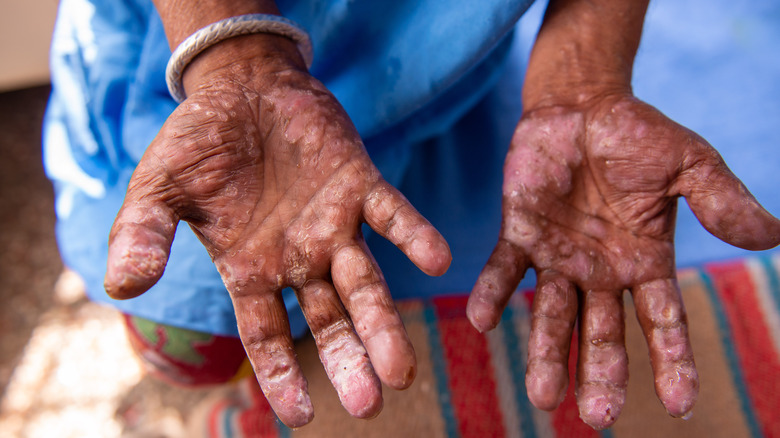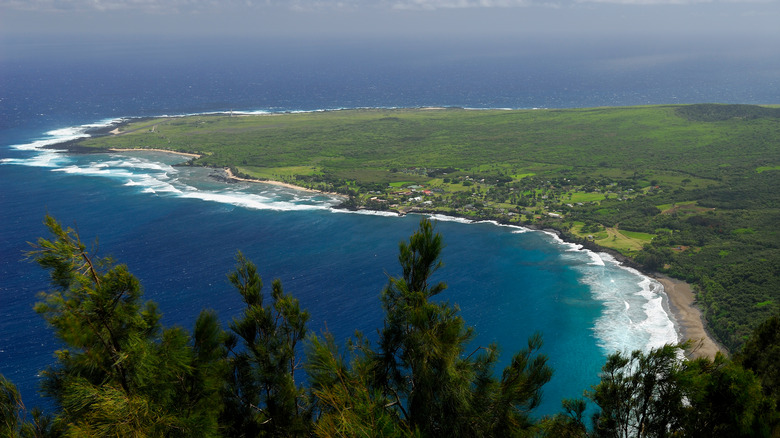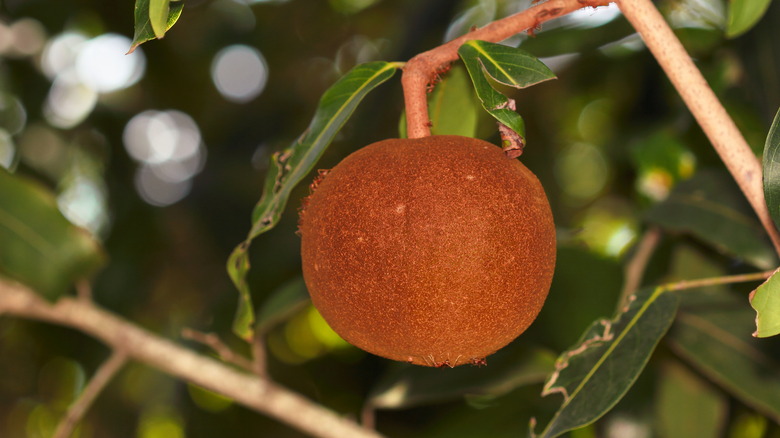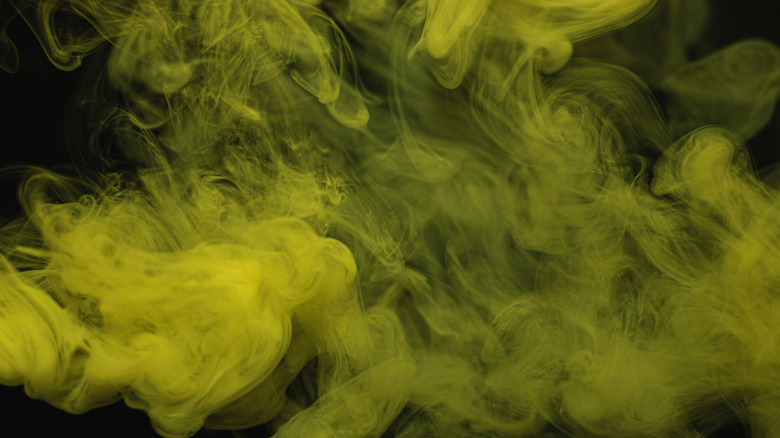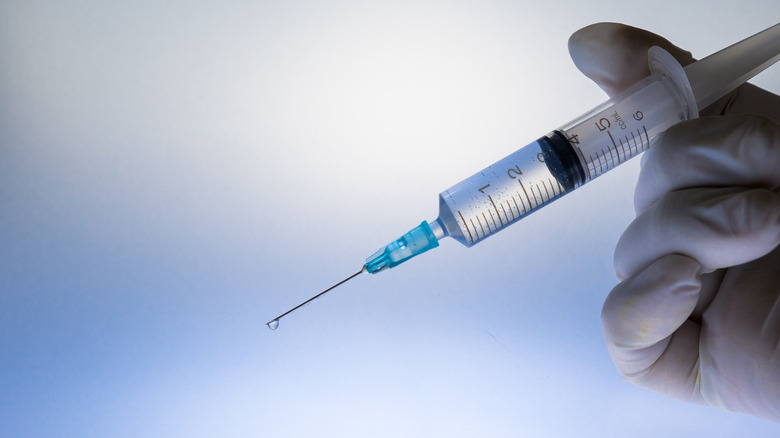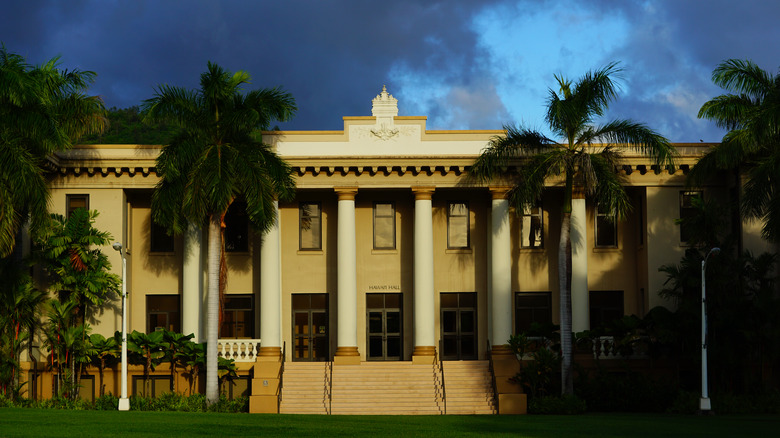The Reason Nobody Knew About Alice Ball's Role In Leprosy Treatment Until After Her Death
Born in Seattle in 1892 to a middle-class family, Alice Augusta Ball was an African American chemist whose contributions to science were largely forgotten (via Biography). According to Smithsonian Magazine, she spent her childhood living with her family in Honolulu, Hawaii, and her intelligence was evident from an early age. She went on to receive two bachelor's degrees from the University of Washington between 1912 and 1914. One was in pharmaceutical chemistry, while the other was in pharmacy. Shortly after, she continued her studies at the University of Hawaii (then called the College of Hawaii) as a graduate student in chemistry.
Black Past writes that in 1915, Ball became the first African American and the first woman to graduate from the university with a master's in chemistry. At only 23 years old, she began working as a chemistry instructor at the institution. Once again, she was the first African American and the first woman to do so. Ball quickly got to work. New Scientist reports that her research on plants caught the attention of Harry T. Hollmann, an assistant surgeon at Kalihi Hospital. Hollmann and his team were attempting to find a cure for Hansen's disease, most commonly known as leprosy.
Beginning in 1866, Hawaii faced a leprosy pandemic that resulted in thousands of native Hawaiians being exiled to Kalaupapa, a facility on the island of Molokai. Ball was eventually able to create an effective treatment for leprosy in 1915. Tragically, she died soon after, but her "Ball Method" successfully treated leprosy patients for decades.
What is leprosy?
Leprosy is an ancient disease that was highly stigmatized for centuries, resulting in the isolation of those who contracted it (via The Lancet). According to the CDC, it's a bacterial infection that can affect the nerves, skin, and eyes. WebMD writes that it can also damage tissue inside of the nose. If untreated, it can lead to disfigurement, the loss of feeling in the hands or legs, skin numbness, blindness, and much more. Per the World Health Organization, it's believed that the disease is transmitted from nose or mouth droplets. Ultimately, it can take anywhere from one to 20 years for symptoms to appear.
Smithsonian Magazine reports that leprosy was believed to be brought to Hawaii by Asian and European immigrants. Whatever the case, it devastated the native Hawaiian population. Between 1866 and 1969, those who had an extreme bout of leprosy were forced into isolation at Kalaupapa. Conditions on the secluded island were dismal, and most, including children, were separated from their families. Moreover, they were relegated to live out the rest of their lives in the leprosy colony. Although churches, stores, and dance halls were created on the island, famed writer Jack London later stated (per New Scientist) that Kalaupapa was "the pit of hell, the most cursed place on earth."
The previous treatment for leprosy was ineffective
Before the "Ball Method" was created, the only known treatment for leprosy was oil from chaulmoogra tree seeds (via New Scientist). Per Smithsonian Magazine, this native Asian plant was used as a topical agent for years. When it came to being used as a remedy for leprosy, the chaulmoogra oil posed some issues. When ingested, it caused vomiting, and as a balm, it was too sticky for application on the skin. Although injecting the oil was attempted, this resulted in the formation of painful blisters. Nonetheless, Harry T. Hollmann knew he was on to something when he began using the oil on his leprosy patients.
When he hired Alice Ball, he hoped she would be able to make the oil injectable without the previous problems associated with it. According to Biography, Ball did exactly that. By isolating some of the chaulmoogra oil's compounds, she was able to create a water-soluble injection. Later named the "Ball Method," it allowed the oil to be easily injected while still maintaining its curative effects.
New Scientist reports that the "Ball Method" was extremely efficient — 78 leprosy patients at the Kalihi Hospital were allowed to go home in 1918 after being injected with Ball's new and improved oil. In fact, the "Ball Method" was used until the 1940s, when antibiotics were deemed as a cure for leprosy.
Alica Ball's tragic death
Despite the success of the "Ball Method," Alice Ball never got to relish in her achievements or even publish her work — she died on New Years' Eve in 1916 (via New Scientist). She was only 24-years old, and the cause of her demise remains unclear. Smithsonian Magazine writes that Ball's death certificate lists tuberculosis as the cause of death. However, there are also reports that she accidentally inhaled chlorine gas (seen above) during a class demonstration (per AAREG). It's believed that Ball was showing students how to use a gas mask when the incident occurred.
Whatever the case, she died in Seattle after her mother had taken her home when she became ill. Although her life ended, the "Ball Method" persevered. New Scientist reports that between 1919 and 1923, no leprosy patients were sent to live out the rest of their lives on Kalaupapa — they were instead treated at Kalihi Hospital. This only proved the effectiveness of the treatment. Biography writes that after her death, Ball's coworker and fellow chemistry professor, Arthur L. Dean, continued her research.
A white man took credit for her work
According to Biography, Arthur L. Dean later became the president of the University of Hawaii, but not before he stole Alice Ball's work. New Scientist reports that in 1920, he published a moderately altered version of Ball's discoveries and called it the "Dean Method." He failed to mention Ball's name and subsequently profited from her innovation (via AAREG). Dean quickly began to produce the injectable chaulmoogra oil. Of course, Hollmann, the man who had originally hired Ball to create the substance, knew that Dean had not invented this new method.
In January 1922, Hollman published an article where he called out Dean for his fallacy and gave Ball proper credit. He stated (per New Scientist), "I cannot see that there is any improvement whatsoever over (the) original technique as worked out by Miss Ball." Despite this, the article did nothing to bring Ball's name into prominence. Per Smithsonian Magazine, chaulmoogra oil as a treatment for leprosy lost its popularity in the 1930s and was replaced by the 1940s. However, Ball's name resurfaced in the 1970s when researchers and a group of professors from the University of Hawaii encountered her work.
Alice Ball received accolades for her work decades after her death
New Scientist writes that historians Kathryn Takara, Stanley Ali, and Paul Wermager worked together to ensure Alice Ball received the proper praise she deserved. Ali first came across Ball's name when he was researching African Americans in Hawaii (via Smithsonian Magazine). His interest was piqued when he read a book titled "The Samaritans of Molokai” about leprosy patients. The book referenced a "young Negro chemist" who was later found to be Ball. After researching her for years alongside Wermager, they were able to put together pieces of Ball's life.
Wermager later stated (per Smithsonian Magazine), "I finally got enough to envision what she was like: not a selfish person and very caring and giving." Ali later told the Honolulu Star-Bulletin that he believed Ball's scientific contributions were largely forgotten due to her race and gender. Nonetheless, he expressed his intention of making sure that Ball was recognized for all that she did. Needless to say, he accomplished that goal.
According to Biography, a chaulmoogra tree that stands at the University of Hawaii-Manoa has had a plaque with Ball's name since 2000. Additionally, Wermager created a scholarship in her honor for science students. In 2007, she was awarded a Regents' Medal of Distinction from the University of Hawaii. In 2022, February 28 was deemed "Alice Augusta Ball" day in Hawaii (per Hawaii Public Radio).
